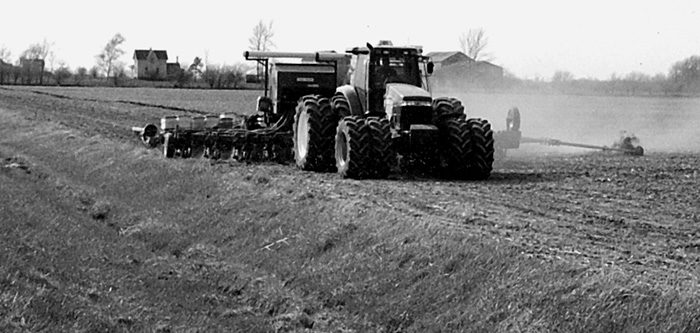No-Till Farmer
Get full access NOW to the most comprehensive, powerful and easy-to-use online resource for no-tillage practices. Just one good idea will pay for your subscription hundreds of times over.

With no-till's high residue levels, a challenging environment is created in which to effectively manage your nitrogen. In any given year, you can expect nitrogen loss from immobilization, denitrification, leaching or volatilization.
One of the first things that can happen to your nitrogen after application is nitrogen immobilization, says Allen Sutton of Agrotain International in Corydon, Ky.
Nitrogen is an essential element for soil organisms to grow, just as it is for plants and animals. Since soil organisms can utilize fertilizer nitrogen as well as growing plants, this process of nitrogen “tie-up” by soil organisms is called immobilization.
In the decomposition process, soil bacteria requires 1 pound of nitrogen for every 11 pounds of carbon. The greater the carbon containing material, the greater the potential nitrogen tie-up or immobilization that can be lost to the crop during the growing season. When decomposition is completed and the bacteria die, the nitrogen in these cells is made available to the growing crop.
No-tillers can reduce the amount of tied-up nitrogen by placing it below the carbon rich zone. This has a dramatic impact on reducing the amount of immobilization.
If you use urea-containing compounds, Sutton says you should consider using an urease inhibitor to reduce the amount of immobilization. Then when rainfall occurs, urea-containing compounds can leach through the carbon rich zone.
No-tillers can expect some denitrification almost every year. Occurring in the nitrate form, it can result in nitrogen losses that can run as high as 35 percent.
Soil…